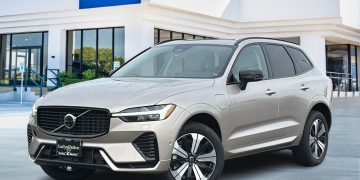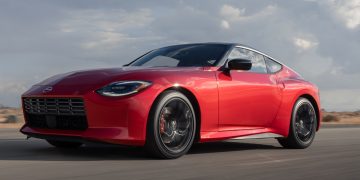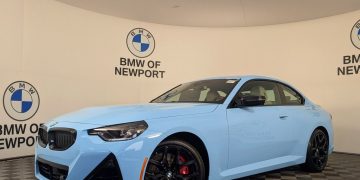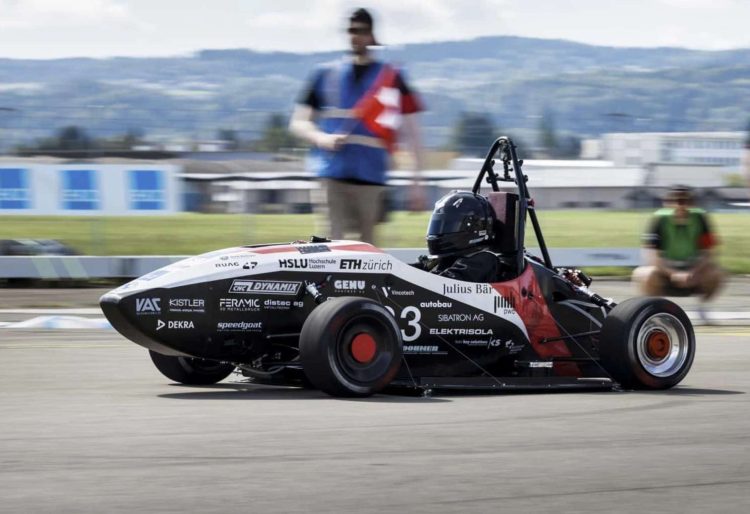Introduction
The concept of speed has been integral to the automotive world since the very beginning of car culture. From the first automobile’s creation to the sophisticated, high-performance sports cars and everyday sedans of today, speed has been a driving force behind much of the innovation, design, and fascination with cars. The allure of speed, in many ways, defines not only what cars are capable of but also how they reflect societal values, personal identity, and technological advancement.
The pursuit of speed, which once seemed to be reserved for racing circuits or luxury sports cars, has expanded into the everyday realm, influencing everything from car design to the expectations of the average driver. Car enthusiasts, manufacturers, and the broader public continue to elevate speed to iconic status. However, as we look toward the future, the role of speed is shifting in unexpected directions—especially as electric vehicles and autonomous driving technologies begin to reshape the very definition of what it means to drive fast.
This article will explore how the concept of speed has shaped car culture, focusing on two major aspects: speed’s impact on car design and buyer preferences, and the evolving role of speed in the age of electric and autonomous vehicles.
Speed and Design: How Speed Has Influenced Car Design and Buyer Preferences
The Origins of Speed in Automotive Design
The role of speed in car design dates back to the early 20th century, when automobiles first entered the mainstream. In the early days, cars were seen primarily as practical modes of transportation, with speed not being a primary focus. However, as manufacturers refined their vehicles and competition increased, speed became a hallmark of prestige and performance. The desire for faster cars led to a more innovative approach to vehicle design, with engineers and designers looking to maximize both the engine’s power and the car’s aerodynamics.
For example, the introduction of the V8 engine in the 1930s marked a turning point in automotive history, providing the horsepower necessary to create faster, more powerful vehicles. Iconic cars such as the 1932 Ford Deuce Coupe, which became a symbol of American hot-rodding, showcased the increasing importance of speed and performance in car culture. The Deuce Coupe was not just about looks—it was a car built for speed, with modifications to increase its power and performance on the road.
Speed and Luxury Cars
The role of speed in luxury cars has become an enduring characteristic of high-end brands. Automakers like Ferrari, Lamborghini, Porsche, and Bugatti have built their reputations around creating vehicles that not only look stunning but are also designed to deliver blistering speed. Speed, in this context, goes hand-in-hand with luxury and exclusivity, as these manufacturers have constantly pushed the limits of what is technologically possible.
The Ferrari 250 GTO, for example, which was introduced in the early 1960s, became one of the most iconic speed-driven vehicles in the world. This car wasn’t just a testament to Ferrari’s engineering prowess, but it was also the vehicle that proved that speed could be a selling point in the luxury car market. The combination of beautiful design, exclusivity, and exceptional performance made the Ferrari 250 GTO a symbol of affluence and speed.
Speed and Everyday Cars
In addition to luxury and performance cars, speed has also found its way into everyday consumer vehicles. Automakers have long been aware of the consumer appeal of speed, and many have integrated performance aspects into regular sedans, hatchbacks, and even family vehicles. The rise of sport versions of everyday cars, such as the Honda Civic Type R, Volkswagen Golf GTI, and Ford Focus ST, reflects how speed has become a desirable feature even for those who do not necessarily seek out the highest performance vehicles.
These vehicles often include sportier designs, more powerful engines, and enhanced suspensions to give the driver an experience that is both thrilling and practical. The appeal of a faster car is not solely about top speed but also about the driving experience—how the car accelerates, handles corners, and provides excitement on a daily commute. For many buyers, owning a car that offers sporty performance, even in a practical body, has become a defining characteristic of modern automotive culture.

The Impact of Speed on Marketing and Consumer Preferences
The concept of speed has long influenced automotive marketing and consumer preferences. Advertisements often emphasize speed as a key selling point, playing to the excitement and emotional connection that many people feel when they imagine driving fast. The thrill of speed is often associated with freedom, adventure, and personal expression, making it a highly effective marketing tool.
Car brands have used speed as a symbol of progress and innovation. For example, when Chevrolet launched the Corvette in 1953, it marketed the car not just as a beautiful machine, but as an exciting performance vehicle. Over the decades, speed has remained at the forefront of Corvette branding, with each new generation touting faster speeds and more powerful engines. The same can be said for other iconic vehicles, such as the Ford Mustang, Porsche 911, and Nissan Skyline, all of which have leveraged speed as a core element of their appeal.
The connection between speed and consumer preference is evident in the ongoing demand for high-performance cars. While not everyone may be able to afford the top-tier sports cars or supercars, many consumers still desire cars that offer a high level of performance, even in more affordable categories. This demand has led to increased availability of performance-enhanced versions of everyday vehicles, helping to make speed a common thread running through the automotive industry.
Future of Speed: The Role of Speed in Electric Vehicles and Autonomous Driving Cars
Speed and Electric Vehicles
The rise of electric vehicles (EVs) has transformed the way speed is perceived in the automotive world. In the past, internal combustion engines (ICE) were the primary source of speed, with performance cars often relying on powerful engines to reach their top speeds. However, electric motors have demonstrated that speed can be achieved in a completely different way, with an entirely new set of advantages.
Electric vehicles, due to the nature of electric motors, offer instant torque, meaning that they can accelerate much faster than traditional gas-powered vehicles. This has led to the development of high-performance electric cars that deliver exceptional speed and acceleration, such as the Tesla Model S Plaid, which is capable of going from 0 to 60 mph in less than 2 seconds. This shift in speed dynamics has caused a reevaluation of what it means to drive fast, as electric vehicles prove that speed is not only about top-end velocity but also about how quickly a car can reach its desired speed.
Furthermore, many electric vehicles now offer significantly quieter driving experiences, providing a sense of speed that is more refined and less raw compared to traditional performance cars. The emphasis in the electric vehicle sector has moved toward both speed and sustainability, with manufacturers finding ways to maximize performance while minimizing environmental impact.
As more electric vehicles enter the market, speed will continue to play a key role in consumer decision-making. Consumers are drawn to the idea of owning a car that can not only reduce emissions but also provide thrilling, high-speed experiences. Electric performance cars such as the Lucid Air and the Porsche Taycan are leading the charge, offering powerful acceleration and unparalleled speed while being environmentally friendly.
Speed and Autonomous Vehicles
One of the more unexpected developments in the future of car speed is the rise of autonomous driving technology. While autonomous cars are often associated with convenience and safety, they also have the potential to change the way speed is perceived on the road. Autonomous driving systems have the potential to optimize speed more efficiently than human drivers, using algorithms and sensors to maintain optimal acceleration and deceleration for a smooth and efficient driving experience.
The role of speed in autonomous vehicles will likely be less about raw acceleration and more about maximizing efficiency, safety, and smoothness. With autonomous systems in place, cars can be programmed to adjust speed according to traffic, road conditions, and environmental factors. In this sense, the speed of autonomous cars may be less about going as fast as possible and more about optimizing driving for the best experience.
Some may argue that the pursuit of speed will diminish as autonomous technology becomes more widespread. However, others believe that autonomous driving could open the door to faster cars, as the human element of driving speed will no longer be a limiting factor. With the potential for self-driving cars to handle high-speed situations with precision, the future of speed may involve a combination of high performance, efficiency, and safety.
Conclusion
Speed has been a fundamental aspect of car culture for over a century, shaping not only the design and performance of vehicles but also influencing consumer preferences and marketing strategies. From the early days of the automobile to the luxury sports cars that define the pinnacle of performance, speed has symbolized progress, excitement, and freedom.
As we look to the future, speed will continue to evolve in exciting new ways. Electric vehicles are revolutionizing the concept of speed with their instantaneous torque and high-performance capabilities, while autonomous cars may redefine the very nature of driving fast. Regardless of these changes, speed will always remain a key element of car culture, representing not only the technology behind the vehicle but also the emotional and cultural significance that speed holds for drivers around the world.


































Discussion about this post